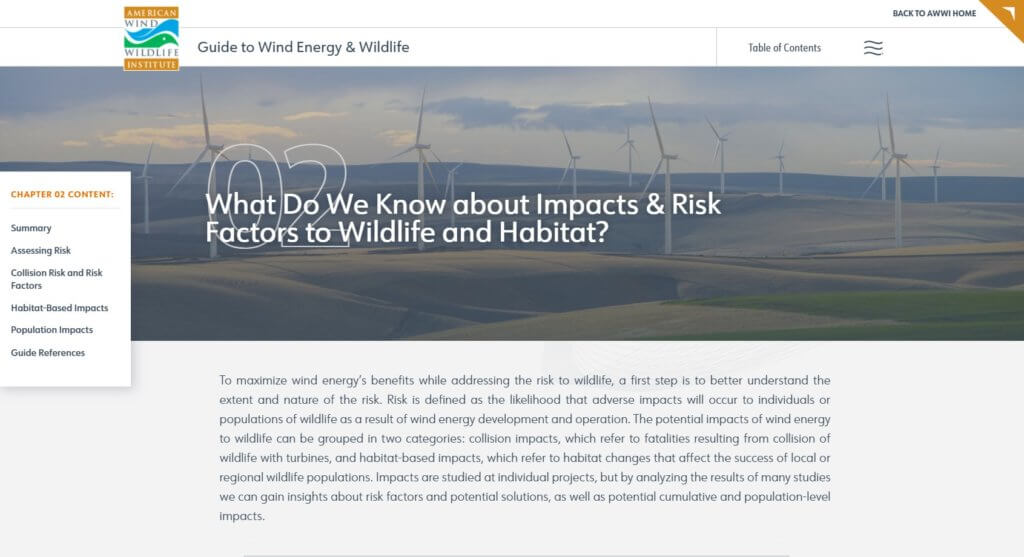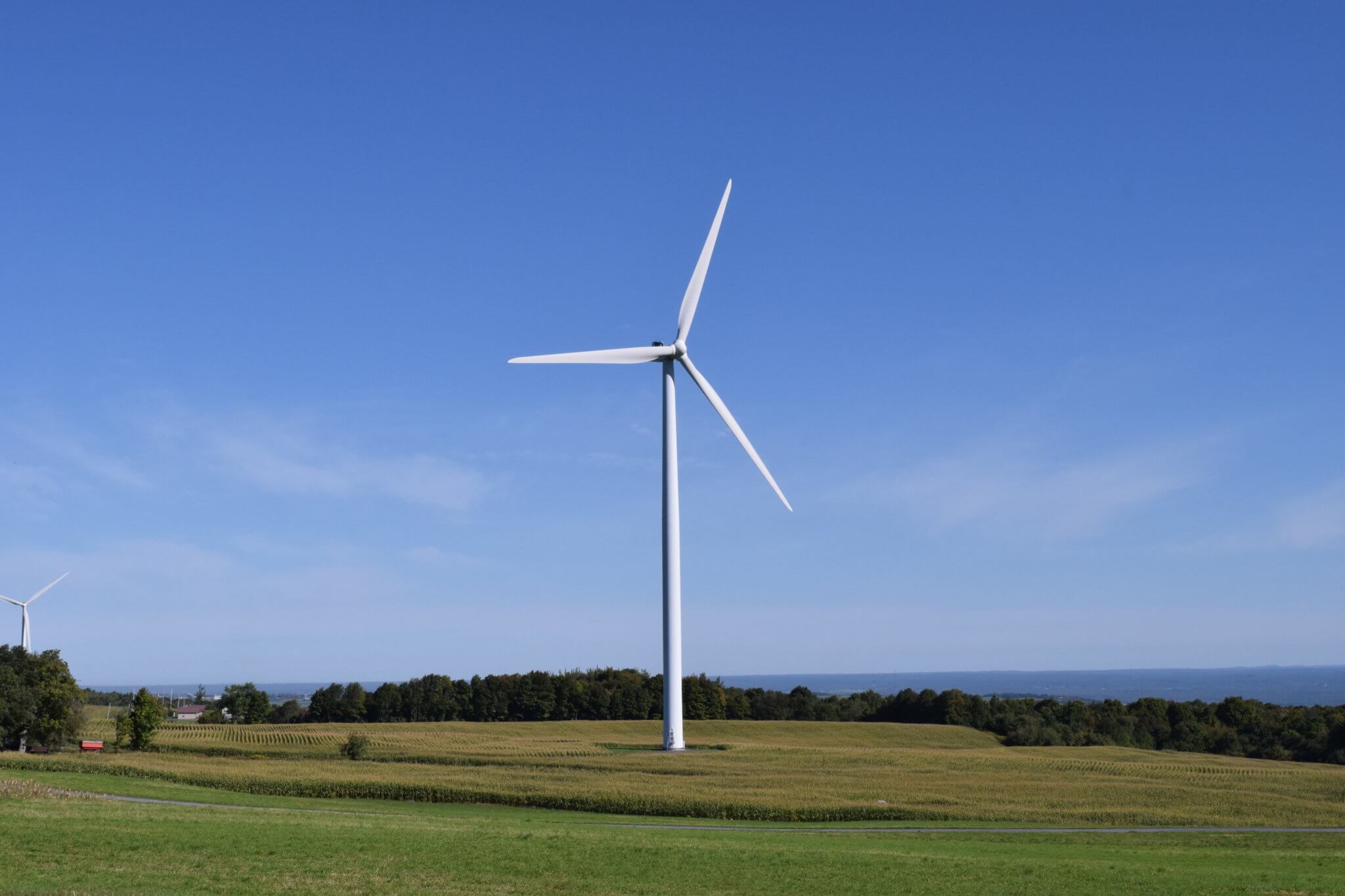AWWI’s New Wind Energy and Wildlife Guide Educates Public on Responsible Coexistence
Wind power is one of the most environmentally friendly ways of generating electricity and the industry is committed to proactively reducing its already low impact on the environment. In fact, wind energy has one of the lowest impacts on wildlife and their surrounding habitats of any utility-scale electricity generation. And for nearly three decades, the wind industry has worked collaboratively with conservation partners to develop innovative solutions to ensure wind energy and wildlife can successfully coexist. Now, a new interactive resource from the American Wind Wildlife Institute (AWWI) showcases the collective efforts and steps that the industry and cross sector partners have taken over the years to understand the science, solutions, and current research to grow wind energy while protecting wildlife and their habitats.
AWWI works to preserve wildlife while responsibly growing renewable wind energy resources. AWWI’s new “Guide to Wind Energy & Wildlife” is a one-stop-shop for an extensive and up-to-date summary of information, publications, and additional resources on land-based wind energy and wildlife. The guide reflects more than 25 years of collaborative work to better understand wind energy’s impact on wildlife and develop solutions to facilitate the responsible expansion of wind energy while achieving conservation goals.
Developed in consultation with experts from state and federal agencies, the conservation and science community, and the wind industry, the guide provides a dynamic platform that walks readers through what we know about wind-wildlife interactions, what strategies are available and being applied to solve challenges, and what work is currently underway. It also features a selection of references to help readers explore further information.

The new, interactive guide summarizes what we know about developing land-based wind energy in the U.S. while protecting wildlife and their habitats. Credit: AWWI
AWWI’s new wind and wildlife guide includes summaries of the latest information on:
- The regulatory and policy framework and guidelines for wind energy development in the context of wildlife interactions
- Wind-wildlife research methods
- What we know about risk to wildlife including collision, habitat-based, and population level impacts and what remains uncertain
- Landscape assessment and siting to address risk to wildlife and habitat
- Strategies to minimize collision impacts at operating wind facilities
- Compensatory mitigation approaches

Wind energy developers consider many constraints, including potential impacts to wildlife and their habitat, when siting new projects. Credit: AWWI
Clean power sources, like wind, are some of the safest ways to generate large amounts of electricity while also creating population-level benefits for many species through reduced air and water pollution. According to ACP’s latest Clean Power Quarterly Report, the amount of installed wind capacity in the U.S. can prevent 301 million metric tons of carbon dioxide from being released into the Earth’s atmosphere each year. That’s the equivalent of avoiding 65.5 million cars’ worth of emissions. Wind energy also avoids the consumption of nearly 143 billion gallons of water.
Climate change remains the biggest threat to many species of wildlife. The National Audubon Society’s Survival By Degrees analysis found that two-thirds of the North American species of birds are at risk of extinction if we are unable to keep the warming of our planet below three degrees Celsius. Wind energy is a key climate solution and has a vital role to play in reducing carbon emissions from the energy sector as our country drives toward decarbonizing our electric grid. The wind industry remains committed to working with conservation partners in driving innovative solutions that support wildlife and the environment while achieving our country’s climate goals.
Learn more about the wind industry’s efforts toward the responsible development of projects and wind energy’s coexistence with wildlife by visiting AWWI’s new interactive wind and wildlife guide on their website. AWWI’s guide will be updated throughout the year and undergo a thorough expert review annually. Readers can sign up for AWWI’s mailing list and watch for information about important updates to the guide.

